Coherence
How do we measure the effectiveness of diffusion? I’ve been asked that more times than I can measure, which is the point here – the industry does not yet have any meaningful measurement of “good” diffusion. Sorry number-based people, but we are not yet able to accurately relate what we measure to what and how we hear (and often, feel) in a “good-sounding” room.
Sound familiar? It’s the same often-bitterly-contested war of words between those who ‘intuit’ audio (from listening experience) and those number-based folks who believe we’ve ascended as high as we can in our understanding of audio metrics, with distortion, frequency response, signal-to-noise, and polar pattern supplying all we’re ever going to need to know about sound. Some people act as if ‘intuition’ is a bad thing. And for them, maybe it is.
Fortunately, other number-based folks keep trying to improve our measuring capabilities, and for that we are all grateful. Perhaps one day we’ll get fairly close to measuring what and how we hear. More “limbic system” studies? Better ear-brain measurement systems?
Meanwhile, let me say this, in the spirit of opinion-based communications – the diffusors made by Acoustic Geometry are better because they’re based on coherent diffusion, or more accurately, phase coherency. Quadratic-residue diffusors are non-coherent diffusion, or based on phase non-coherency – it’s the foundation of that type of diffusor.
Why does it matter? Some of us understand that we are extremely sensitive to phase-based sound cues, from thousands of years of listening for directional danger sounds, which occur in nature as phase-coherent signals. There are very few naturally-occurring phase non-coherent signals. I’m just sayin’…
And we ARE working on metrics you can use to compare different types of diffusors, including phase response measurements – watch for them on the AcoGeo website.










